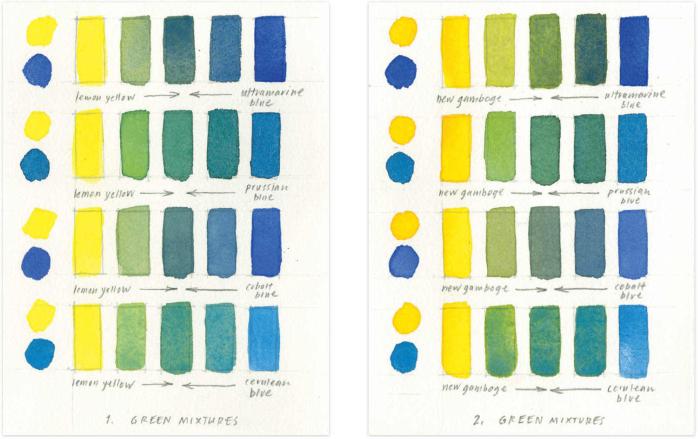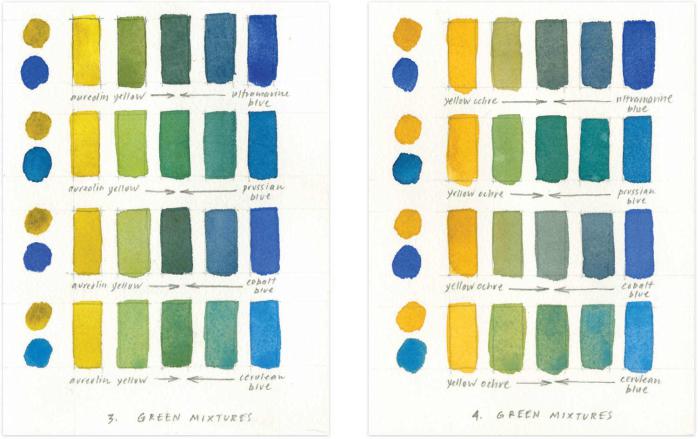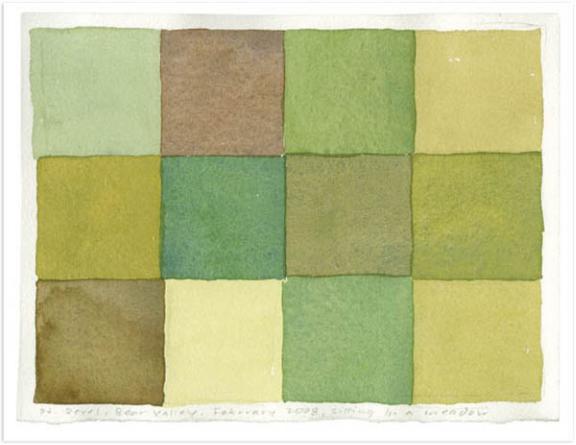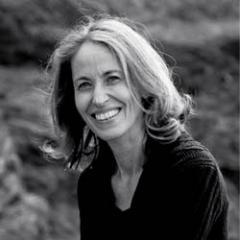
- •Acknowledgments
- •Introduction
- •Landscape
- •Ocean/Sky
- •Light
- •Wildflowers
- •Fog, Mist, and Haze
- •Forest, Lichen, and Moss
- •The Colors of Point Reyes National Seashore
- •Materials
- •Essential Equipment
- •Optional Equipment
- •Preparation
- •Paper Size & Grid
- •Pigments & Color Theory
- •Technique
- •Brush Marks
- •Painting
- •A Note on the Photographs
- •Habitat
- •Light
- •Weather
- •Seasons
- •Seasons: A Year in Color
- •Antigua, Guatemala
- •Lake Atitlán, Guatemala
- •Pátzcuaro, Mexico
- •Luxor, Egypt
- •The Dead Sea, Jordan
- •Petra, Jordan
- •Lake Issyk-Kul, Kyrgyzstan
- •Newport, Pennsylvania
- •Barney’s Joy, Massachusetts
- •Sacred Valley, Peru
- •Dominica, West Indies
- •Isle of Skye, Scotland
- •Inverness, Scotland
- •Mitchell, Oregon
- •New York, New York
- •San Francisco, California
- •Portland, Oregon
- •Big Picture
- •Detail
- •Sky Patch
- •Terrain
- •Rocks
- •Water
- •Color Walk
- •Color Memory
- •Naming Colors
- •Color Mixing
- •Primary and Secondary Colors
- •Tertiary Colors
- •Analogous Colors
- •Complementary Colors
- •Value or Tone
- •Color Temperature
- •How Many Greens are there?

HOW MANY GREENS ARE THERE?
Unless you live in Antarctica, you likely see greens everywhere. Greens challenge a painter: how do you represent all the tones, values, intensities? Green is abundant in nature, on the ground, in the leaves, reflected in the water: emerald green, aqua, lime green, dull green.
Different seasons have different greens. Bright soft yellow greens of spring shift to dense dark green foliage in the heat of summer. Mixing your own greens will give you a variety of vibrant and subtle colors that work for different seasons, light conditions, and places.

PRACTICE
•Create a chart showing all the greens you can mix from variations of just two colors, blue and yellow. Different blues and different yellows in equal amounts will produce different shades of green. Adding more blue creates one kind of green, adding more yellow creates another.
•Vary the mix to create warm and cool temperatures. Putting two opposite greens together can bring out the differences in cool and warm color and make them come alive on your palette.
•Vary the quantity of paint versus water in your green mix to adjust the value.
•Make color palettes: All of the greens you see in one landscape, in one plant, in a still life of green fruit and vegetables: limes, grapes, lettuces, chards, celery—whatever’s in your refrigerator, five green shades where you sit right now
A FEW BOOKS I LIKE ABOUT COLOR AND PLACE:
•Josef Albers, The Interaction of Color, 50th Anniversary Edition (New Haven, CT: Yale University Press, 2013)
•Arielle Eckstut and Joann Eckstut, The Secret Language of Color: Science, Nature, History, Culture, Beauty of Red, Orange, Yellow, Green, Blue, and Violet (New York: Black Dog & Leventhal Publishers, 2013)
•Victoria Finlay, Color: A Natural History of the Palette (New York: Random House, 2003)
•Johann Wolfgang von Goethe, Goethe’s Theory of Colours, trans. Charles Lock Eastlake (Cambridge: Cambridge University Press, 2014)
•Robert Henri, The Art Spirit (New York: Basic Books, 2007)
•Barry Lopez and Debra Gwartney, Home Ground: Language for an American Landscape (San Antonio: Trinity University Press, 2011)
•Anne Varichon, Colors: What They Mean and How to Make Them (New York: Abrams, 2007)
•Natasha Wing, An Eye for Color: The Story of Josef Albers, illustrated by Julia Breckenreid (New York: Henry Holt and Company, 2009)
AND ONE WEBSITE:
The Cooper Hewitt Smithsonian Design Museum website allows you to look at its collection through the lens of color:
• https://collection.cooperhewitt.org/objects/colors/

To my father, Charles Robinson, 1931–2014, who gave me a love of art


ARTIST, DESIGNER, & EDUCATOR MIMI ROBINSON began creating color palettes inspired by place for her own painting. A graduate of the Rhode Island School of Design, Robinson has worked extensively in Latin America, Africa, the Middle East, Central Asia, and the Caribbean. She partners with artisan communities to promote and honor the use of traditional skills and local materials and to build small businesses that incorporate their artistic legacies.
www.MimiRobinsonDesign.com
www.LocalColorCollective.com
Also available from Princeton Architectural Press:
THE ARTIST’S EYE
Peter Jenny
ISBN 978-1-61689-056-8
DRAWING TECHNIQUES
Peter Jenny
ISBN 978-1-61689-054-4
FIGURE DRAWING
Peter Jenny
ISBN 978-1-61689-049-0
